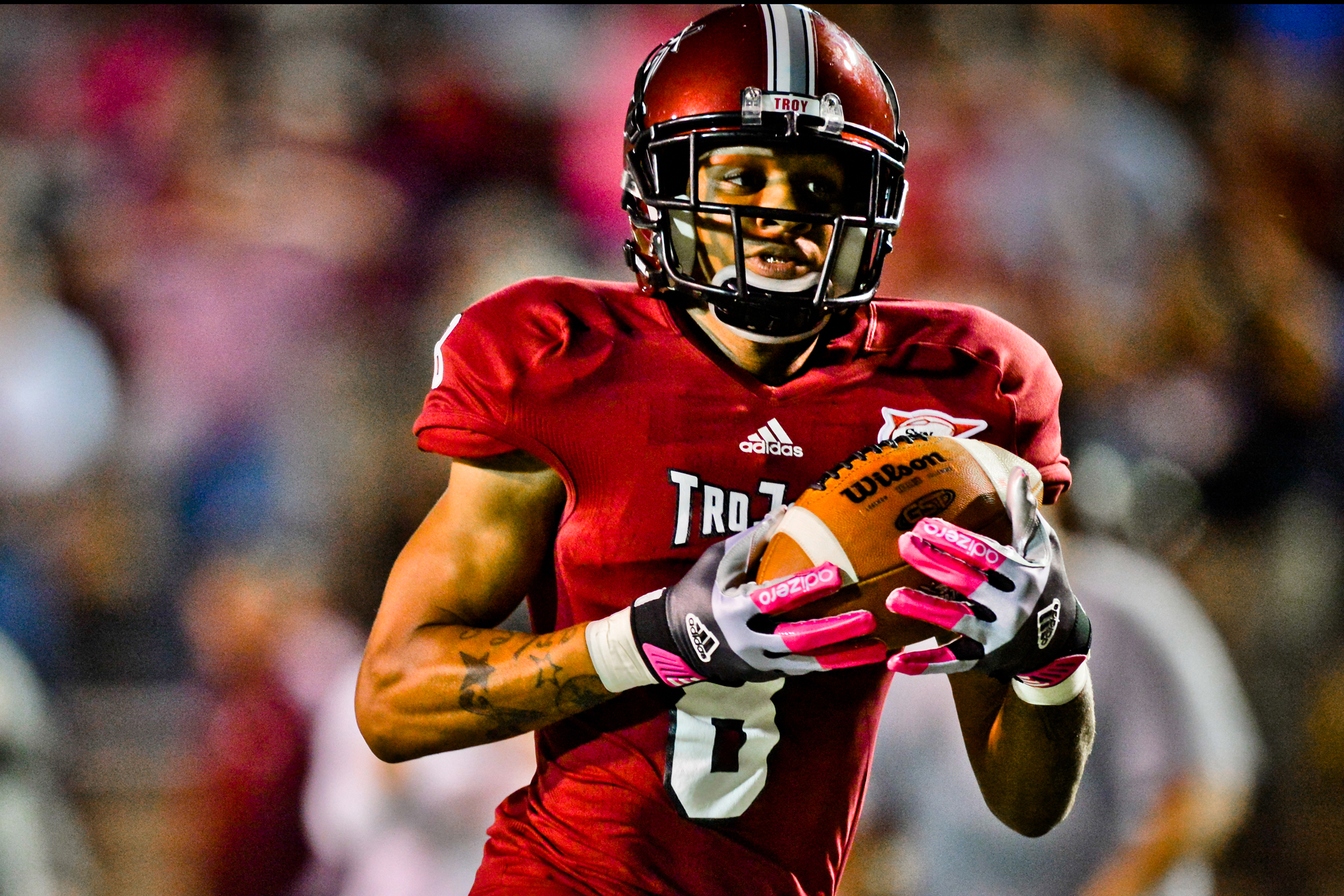Troy Trojans Quietly Having Football Success At Every Level
 Adam Prendergast/Troy Athletics
Adam Prendergast/Troy Athletics
By Wayne Otto
FBS Columnist
College Sports Journal
TROY, AL. — There is only one constant in collegiate athletics, and that is change.
In the 1960’s and 1970’s there was a mass exodus from the NAIA to the up and comer association, the NCAA.
Sure, the NCAA already had the “big boys’ of collegiate competition but the NAIA was a better fit for all of the smaller schools playing the intercollegiate athletics game.
Ever since 1978, when the NCAA sub-divided the Division I level into two divisions, colleges and universities have been trying to define themselves to see where they fit best in the athletics competition and the athletics revenue business.
The 1980’s saw the first of another great transition in collegiate sports with schools wanting to get to the highest level in the football competition arms race.
The 1990’s saw more schools transition to the I-A (now FBS) level and there was a big move for NCAA Division II schools to make a move to Division I and to play in I-AA (now FCS) football.
The bell-weather cow for the move to the FBS is Boise State University, who made the leap in 1996 — just two years after a run to the 1994 I-AA championship game, where the Broncos lost 28-14 to Jim Tressel’s Youngstown State Penguins.
The Broncos have been ranked in the Top-5 in football polls and have been a BCS bowl game buster or “outsider.” BSU has even shared in some of the big-time bowl football riches.
Marshall, Connecticut Louisiana Tech, South Florida, Central Florida, Nevada, Troy and Arkansas State, among others have had some success after jumps to the Football Bowl Subdivision, though many other programs have been less fortunate.
But with the move of so many programs from the Football Championship Subdivision, the domino effect has been in place as schools like Elon, Coastal Carolina, Gardner-Webb, North Dakota State, South Dakota State, North Dakota, South Dakota, Old Dominion, Wofford, Stony Brook, Jacksonville State and Samford have made the successful transition to what once was called the Division I-AA level.
Abilene Christian and Incarnate Word, among others, will be bringing their football programs to the FCS level in the next couple of years.
But flying under the football media radar is Troy University, which has been a football power at every level they have played from NAIA to I-AA.
And it has forged more consistent success at the FBS tier than any team not named Boise State.
Currently, Troy is 3-3 overall and 2-2 in league, with the heart of the Sun Belt Conference schedule still to come. There are also back-to-back non-conference games ahead with Tennessee and Navy.
Troy is coming off a 31-26 Sun Belt loss last Saturday to Western Kentucky, the 2002 national champion in I-AA, and hosts two other teams that have made the move to FBS in the next two games, Florida International and Florida Atlantic.
The Trojans’ football program, which has tallied seven winning seasons and one .500 record in the previous 11 years at the FBS level, is the poster child for football movement.
Troy was an NAIA powerhouse and claimed the 1968 national championship, before moved to the NCAA in 1970 and joining the Division II Gulf South Conference.
The Trojans won the conference championship in just their second year.
Troy won the D-II national championship in 1984 under current NFL head coach Chan Gailey, defeating the North Dakota State Bison 18-17 — the current FCS champion— and claimed another title in 1987 edging Mouse Davis and Portland State, 31-17.
The Troy Board of Trustees vote to move to the NCAA I-AA in 1990 and in their transition year in 1992, the Trojans were 10-1.
It was current head coach Larry Blakeney’s second season at the helm of the Trojans.
 Adam Prendergast/Troy Athletics
Adam Prendergast/Troy Athletics
In its first year of playoff eligibility in 1993, Troy advanced to the national semi-finals eventually losing to the Marshall Thundering Herd.
Football success was thriving in Troy in the 1990’s as the Trojans advanced to the NCAA playoffs in seven of their nine years of eligibility.
Troy also won four Southland Conference championships during that span.
The Trojans transitioned to the I-A level in 2001 and opened the current chapter of Troy football with a road game at Memorial Stadium in Lincoln, NE. against the Nebraska Cornhuskers.
Larry Blakeney’s group posted an impressive 7-4 ledger that initial season.
Troy competed as an NCAA Independent for three tears before joining the Sun Belt Conference in 2004.
The Trojans have dominated the Sun Belt during the 2000’s, winning five championships. The Trojans have also played in five bowl games during that span.
In 2004, the Trojans beat No. 16-ranked Missouri, 24-14, and in 2007 toppled Oklahoma State, 41-23, both in the friendly confines of Veterans Memorial Stadium in Troy.
“Troy has had a proud athletics, football in particular, tradition, but there is room for more growth and more national athletics exposure.” said newly hired Athletic Director John Hartwell. “We will strive to make Troy University a national power in athletics and make Troy a great educational destination for students and student-athletes.”
Troy University and their 7,600 campus students have made great strides in their athletic program over the years and has made program moves in the right way over the years in their attempt to be the best athletic program they can be.

Wayne is the owner of Pro-Am Sports is the foremost dealer of game worn uniforms, jerseys and equipment in the world. Pro-Am Sports has been in business for over 30 years and currently has the world’s largest inventory of game used merchandise from the NBA, NFL, NHL, Major League Baseball, the minor leagues and colleges. Wayne has also been an author and contributor to the College Sports Journal since its inception in 2012.